Nanophotonics & Optoelectronics
Photonic and optoelectronic phenomena on the nanometer scale are at the heart of fundamental science and technology. The institute explores various optoelectronic systems.
Project Modules
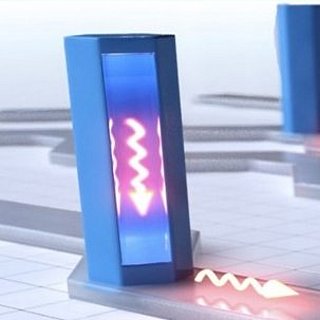
Nanowire Optoelectronics
One of our current research directions is to develop high-performance integrated photonic, quantum photonic and optoelectronic devices based on on-chip monolithically integrated quantum nanowire (NW) heterostructures. Specific examples include NW-based lasers and non-classical single photon emitters based on NW-QD (-quantum dot) devices for next-generation information technology, quantum communication and sensing. Hereby, an important task is to explore the optical and photonic responses of the respective systems using advanced confocal luminescence spectroscopy along with simulations, where e.g. the effects of the quantized electronic structure, light-matter interactions, or the coupling of light to on-chip photonic circuits are probed. The following key publications illustrate our current work on integrated photonic NW-based devices and their properties.
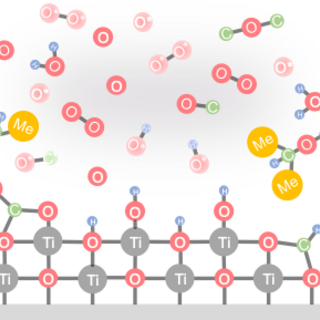
Ultrathin functional materials via atomic layer deposition
From tunable dielectrics integrated into nanoscale electronic devices to multifunctional coatings that promote efficient solar-to-chemical energy conversion, we make extensive use of atomic layer deposition (ALD) to precisely engineer interfaces, design novel heterostructures, and introduce defined functionalities at surfaces. Within this research, we develop novel ALD processes and materials, guided by in situ spectroscopic ellipsometry and mass spectrometry that offer real-time insights into nucleation dynamics, growth kinetics, defect formation, and film properties. Moving beyond traditional approaches, we explore advanced ALD strategies by, for example, integrating plasma-surface interactions to tune interfacial chemical and electronic properties, introducing external stimuli to achieve area-selective growth, and tailoring reaction conditions to shape nanoscale morphologies. By advancing ALD-based methods for precise interface and material control, our work contributes to the development of next-generation electronic, energy, and catalytic systems in which nanoscale structure-property relationships are critical.
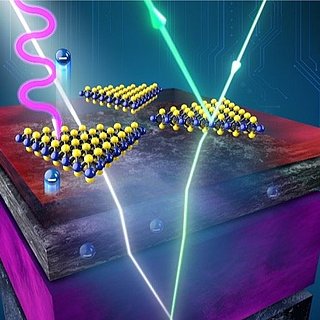
2D Semiconductor Assemblies
While 2D semiconductors offer unique electronic and optical properties, realization of their full potential requires scalable growth and controlled integration into functional assemblies. In our research, we aim to create defined 2D/3D heterostructures using chemical vapor deposition (CVD) of transition metal dichalcogenides (TMDs) onto engineered substrates. These heterostructures include thin film junctions and laterally patterned substrates that enable precise spatial control of the 2D material and its electronic environment. In addition, we take advantage of low-temperature atomic layer deposition (ALD) processes to precisely tune interaction lengths and strengths between TMDs and their surroundings. A major emphasis of this work on 2D semiconductor assemblies is devoted to elucidating interfacial mechanisms that govern charge transfer pathways, energetic alignment, and structural and chemical interactions, providing a basis for future applications spanning from advanced optoelectronics to photocatalytic energy conversion.

Superconducting Nanowire Single Photon Detectors (SNSPDs)
Superconducting Nanowire Single-Photon Detectors (SNSPDs) are cutting-edge devices that enable the reliable detection of individual photons. They are formed by nano-patterning thin superconducting films to form nanowires wires. When operated at cryogenic temperatures, they deliver unmatched performance for quantum light detection with high efficiency, low noise, phonon-number resolution and picosecond photon timing precision. Thanks to their speed and sensitivity across a wide range of wavelengths spanning the visible to infrared, SNSPDs are a key technology for quantum communication, secure data transfer, advanced imaging, and fundamental scientific research. In the WSI we work closely with Munich Quantum Instruments GmbH and the QEC Group led by Kai Müller in the framework of several third-party research projects developing the materials technologies for SNSPDs made from polycrystalline superconducting thin films such as MoSi and NbTiN, as well as emergent van der Waals superconductors like NbSe2. We aim to understand the microscopic mechanisms governing the photo-detection process and apply e.g. local He-ion irradiation to enhance detector performance. Detectors are integrated into quantum photonic circuits with much scope for emergent quantum photonic technologies.

Hexagonal Silicon Germanium
By far the most important chip materials are silicon (Si) and germanium (Ge), accounting for ~90% of global demand, and entirely dominating the electronics industry. Silicon chips could be much faster and more energy efficient if they operated with light. Silicon, germanium, and their alloys do not efficiently emit light in their naturally occurring, cubic, crystal form due to their indirect bandgap. However, a newly discovered allotrope of SiGe - hexagonal SiGe - efficiently emits light, holding much promise for silicon based classical and quantum photonic technologies.

Artificial Molecules as Spin-Photon Interfaces
III-V quantum dots (QDs) host ultrastable spin-qubits that can be optically addressed. They are used as deterministic and highly efficient sources of single photons, entangled photon pairs and streams of polarisation entangled photons for quantum photonic technologies. Single spins can create timed strings of entangled photons. Pairs of tunnel coupled spins in QD-molecules can be used to generate non-classical states of light with 2D entanglement structures needed for measurement based quantum information processing technologies.
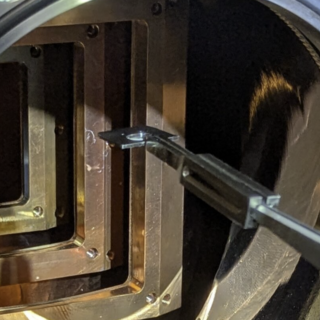
Munich Initiative for Cross-Correlative Spin Microscopy (MICroCoSM)
The overarching goal of the Munich Initiative for Cross-Correlative Spin Microscopy (MICroCoSM) is to facilitate the study of nanoscale quantum materials and hybrid quantum systems using the high-resolution - and crucially - the multi-modal spectroscopy offered by tip-based nitrogen vacancy (NV) quantum sensing. The unique system installed in the labs of WSI moves the boundary of the experimental state-of-the-art by enabling tip-based, time resolved single spin spectroscopy at low temperatures in high magnetic fields. This is done using a low-temperature version of the ProteusQ scanning NV microscope from Qnami as a Spin-based Quantum Light Microscope (SQLM). It provides nanoscale access to magnetic properties of nano-materials subject to electrical / optical perturbations. Feel free to reach out to Prof. Finley if you are interested!

Quantum Transduction
A quantum transducer converts quantum information between different physical systems, such as photons, phonons, or spins. It enables communication across platforms that operate at distinct, and frequently disparate frequency or energy scales. Such devices are essential for linking quantum processors to long-distance quantum communication networks. Working as part of the Munich Quantum Valley project, WSI groups are working on the development of high bandwidth, semiconductor based quantum transducer modules capable of efficiently mapping between microwave quantum states of light and photons in the telecommunications band that can be distributed over optical fibers.

Neuromorphic Photonic Systems
Besides their spectacular optical, spin and electronic properties 2D materials can also exhibit ferroelectric order that arises as a consequence of the stacking order of van-der-Waals (vdW) layered materials and polarisation fields that emerge within the unit cell of the crystal. Such ferroelectricity can be controlled by strain & sliding of the component vdW layers of the materials. We explore high-quality 3R-stacked polytypes of TMDs that exhibit out-of-plane ferroelectricity. In 3R-TMD bilayers, sliding one monolayer a few Ångströms over the other flips the ferroelectric polarisation, a new ‘slidetronics’ concept in condensed matter physics inspired by twistronics. Such materials are deal for nanoscale systems in which ferroelectric order can be controlled with light, providing exciting new opportunities for optoelectronics, neuromorphic photonics, and sensing.
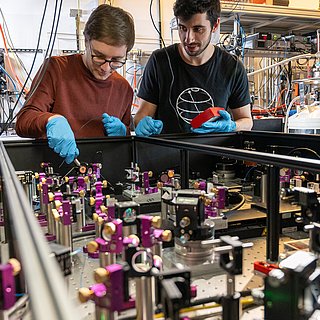
Van der Waals Materials for Integrated Nanophotonics
Integrated quantum photonics is pivotal for the implementation of quantum technologies and their transition from a laboratory to a real-life context. A photonic circuit may comprise one or more single photon sources and diverse components, such as waveguides, beam splitters, interferometers etc. required for steering and processing the quantum signals produced by the sources. In order to insure performance stability, as well as to minimise energy consumption, photonic circuits should integrate as many components as possible on a same chip. To this respect, a critical hurdle is represented by the necessity to assemble different materials that accomplish different tasks. In the VALERIA project our long term vision is to realise a single-material photonic platform exploiting the nano-structuring of transition metal dichalcogenides. The demonstration of this vision will be the fabrication of all-in-one devices made of a single TMD bulk crystal embedding site-controlled single photon emitters integrated with photonic crystal cavities and coupled to waveguides, beamsplitters amd non linear optical components.
Project Module
Nanowire Optoelectronics
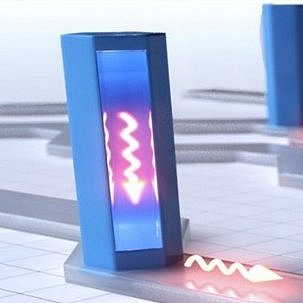
One of our current research directions is to develop high-performance integrated photonic, quantum photonic and optoelectronic devices based on on-chip monolithically integrated quantum nanowire (NW) heterostructures. Specific examples include NW-based lasers and non-classical single photon emitters based on NW-QD (-quantum dot) devices for next-generation information technology, quantum communication and sensing. Hereby, an important task is to explore the optical and photonic responses of the respective systems using advanced confocal luminescence spectroscopy along with simulations, where e.g. the effects of the quantized electronic structure, light-matter interactions, or the coupling of light to on-chip photonic circuits are probed. The following key publications illustrate our current work on integrated photonic NW-based devices and their properties.
Personnel
B. Alparslan, C. Doganlar, B. Haubmann, N. Isaev, H. W. Jeong, S. Meder, T. Schreitmüller, S. Werner, J. Zöllner
Publications
Project Module
Ultrathin functional materials via atomic layer deposition
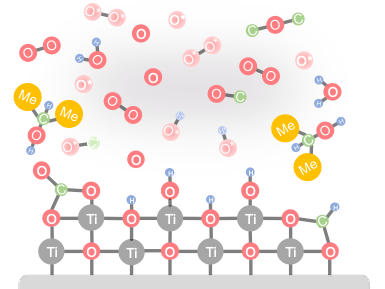
From tunable dielectrics integrated into nanoscale electronic devices to multifunctional coatings that promote efficient solar-to-chemical energy conversion, we make extensive use of atomic layer deposition (ALD) to precisely engineer interfaces, design novel heterostructures, and introduce defined functionalities at surfaces. Within this research, we develop novel ALD processes and materials, guided by in situ spectroscopic ellipsometry and mass spectrometry that offer real-time insights into nucleation dynamics, growth kinetics, defect formation, and film properties. Moving beyond traditional approaches, we explore advanced ALD strategies by, for example, integrating plasma-surface interactions to tune interfacial chemical and electronic properties, introducing external stimuli to achieve area-selective growth, and tailoring reaction conditions to shape nanoscale morphologies. By advancing ALD-based methods for precise interface and material control, our work contributes to the development of next-generation electronic, energy, and catalytic systems in which nanoscale structure-property relationships are critical.
Project Module
2D Semiconductor Assemblies

While 2D semiconductors offer unique electronic and optical properties, realization of their full potential requires scalable growth and controlled integration into functional assemblies. In our research, we aim to create defined 2D/3D heterostructures using chemical vapor deposition (CVD) of transition metal dichalcogenides (TMDs) onto engineered substrates. These heterostructures include thin film junctions and laterally patterned substrates that enable precise spatial control of the 2D material and its electronic environment. In addition, we take advantage of low-temperature atomic layer deposition (ALD) processes to precisely tune interaction lengths and strengths between TMDs and their surroundings. A major emphasis of this work on 2D semiconductor assemblies is devoted to elucidating interfacial mechanisms that govern charge transfer pathways, energetic alignment, and structural and chemical interactions, providing a basis for future applications spanning from advanced optoelectronics to photocatalytic energy conversion.
Project Module
Superconducting Nanowire Single Photon Detectors (SNSPDs)
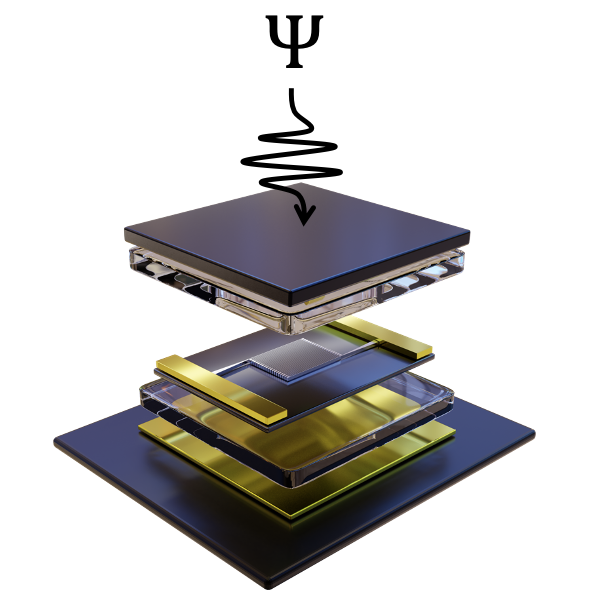
Superconducting Nanowire Single-Photon Detectors (SNSPDs) are cutting-edge devices that enable the reliable detection of individual photons. They are formed by nano-patterning thin superconducting films to form nanowires wires. When operated at cryogenic temperatures, they deliver unmatched performance for quantum light detection with high efficiency, low noise, phonon-number resolution and picosecond photon timing precision. Thanks to their speed and sensitivity across a wide range of wavelengths spanning the visible to infrared, SNSPDs are a key technology for quantum communication, secure data transfer, advanced imaging, and fundamental scientific research. In the WSI we work closely with Munich Quantum Instruments GmbH and the QEC Group led by Kai Müller in the framework of several third-party research projects developing the materials technologies for SNSPDs made from polycrystalline superconducting thin films such as MoSi and NbTiN, as well as emergent van der Waals superconductors like NbSe2. We aim to understand the microscopic mechanisms governing the photo-detection process and apply e.g. local He-ion irradiation to enhance detector performance. Detectors are integrated into quantum photonic circuits with much scope for emergent quantum photonic technologies.
Longer Text Description
Funding Agencies


Project Module
Hexagonal Silicon Germanium

By far the most important chip materials are silicon (Si) and germanium (Ge), accounting for ~90% of global demand, and entirely dominating the electronics industry. Silicon chips could be much faster and more energy efficient if they operated with light. Silicon, germanium, and their alloys do not efficiently emit light in their naturally occurring, cubic, crystal form due to their indirect bandgap. However, a newly discovered allotrope of SiGe - hexagonal SiGe - efficiently emits light, holding much promise for silicon based classical and quantum photonic technologies.
Funding Agencies


Project Module
Artificial Molecules as Spin-Photon Interfaces

III-V quantum dots (QDs) host ultrastable spin-qubits that can be optically addressed. They are used as deterministic and highly efficient sources of single photons, entangled photon pairs and streams of polarisation entangled photons for quantum photonic technologies. Single spins can create timed strings of entangled photons. Pairs of tunnel coupled spins in QD-molecules can be used to generate non-classical states of light with 2D entanglement structures needed for measurement based quantum information processing technologies.
Funding Agencies


Project Module
Munich Initiative for Cross-Correlative Spin Microscopy (MICroCoSM)

The overarching goal of the Munich Initiative for Cross-Correlative Spin Microscopy (MICroCoSM) is to facilitate the study of nanoscale quantum materials and hybrid quantum systems using the high-resolution - and crucially - the multi-modal spectroscopy offered by tip-based nitrogen vacancy (NV) quantum sensing. The unique system installed in the labs of WSI moves the boundary of the experimental state-of-the-art by enabling tip-based, time resolved single spin spectroscopy at low temperatures in high magnetic fields. This is done using a low-temperature version of the ProteusQ scanning NV microscope from Qnami as a Spin-based Quantum Light Microscope (SQLM). It provides nanoscale access to magnetic properties of nano-materials subject to electrical / optical perturbations. Feel free to reach out to Prof. Finley if you are interested!
Funding Agencies


Project Module
Quantum Transduction

A quantum transducer converts quantum information between different physical systems, such as photons, phonons, or spins. It enables communication across platforms that operate at distinct, and frequently disparate frequency or energy scales. Such devices are essential for linking quantum processors to long-distance quantum communication networks. Working as part of the Munich Quantum Valley project, WSI groups are working on the development of high bandwidth, semiconductor based quantum transducer modules capable of efficiently mapping between microwave quantum states of light and photons in the telecommunications band that can be distributed over optical fibers.
Funding Agencies


Project Module
Neuromorphic Photonic Systems

Besides their spectacular optical, spin and electronic properties 2D materials can also exhibit ferroelectric order that arises as a consequence of the stacking order of van-der-Waals (vdW) layered materials and polarisation fields that emerge within the unit cell of the crystal. Such ferroelectricity can be controlled by strain & sliding of the component vdW layers of the materials. We explore high-quality 3R-stacked polytypes of TMDs that exhibit out-of-plane ferroelectricity. In 3R-TMD bilayers, sliding one monolayer a few Ångströms over the other flips the ferroelectric polarisation, a new ‘slidetronics’ concept in condensed matter physics inspired by twistronics. Such materials are deal for nanoscale systems in which ferroelectric order can be controlled with light, providing exciting new opportunities for optoelectronics, neuromorphic photonics, and sensing.
Project Module
Van der Waals Materials for Integrated Nanophotonics

Integrated quantum photonics is pivotal for the implementation of quantum technologies and their transition from a laboratory to a real-life context. A photonic circuit may comprise one or more single photon sources and diverse components, such as waveguides, beam splitters, interferometers etc. required for steering and processing the quantum signals produced by the sources. In order to insure performance stability, as well as to minimise energy consumption, photonic circuits should integrate as many components as possible on a same chip. To this respect, a critical hurdle is represented by the necessity to assemble different materials that accomplish different tasks. In the VALERIA project our long term vision is to realise a single-material photonic platform exploiting the nano-structuring of transition metal dichalcogenides. The demonstration of this vision will be the fabrication of all-in-one devices made of a single TMD bulk crystal embedding site-controlled single photon emitters integrated with photonic crystal cavities and coupled to waveguides, beamsplitters amd non linear optical components.
Funding Agencies




